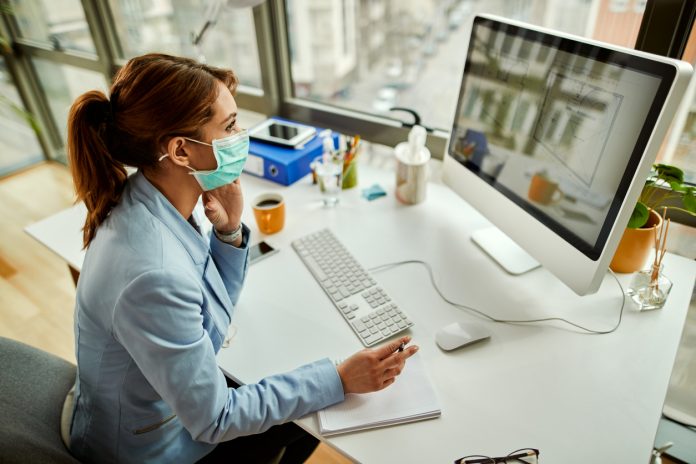Of all the pleasures associated with the office—convivial colleagues, free swag, a steady paycheck—rarely is a health-inducing work environment cited. On the contrary, office life tends to carry negative connotations, such as enforced sedentariness, stress and less-than-optimal sources of nourishment.
According to a 2017 Gallup report, only 33 percent of employees in the United States report being engaged at work. In 2018, the Centers for Disease Control and Prevention published the statistic that over half of adults in the United States currently have a chronic health condition. These statistics suggest there’s considerable room to improve the lives of millions of Americans along with the performance of thousands of businesses.
Just how does the built environment impact health and by extension, productivity? Are there ways to structure an office environment that, just by virtue of working in it, you can experience improved well-being and performance?
Many studies, including one published Harvard University, show that healthy workers tend to be more productive. The result? A growing number of experts say yes and are leading the charge to create offices with measurable wellness benefits. Triple-vented walls, loads of plants and phalanxes of standing desks are just a few examples of some of the suggested modifications.
Recently, two certification programs have gathered steam. One is the Well Building Standard, created by development company Delos in 2014. The Well Building Standard has criteria in seven categories that promote the health of a building’s occupants: air, comfort, fitness, light, mind, nourishment and water.
A more recent certification program is Fitwell, released last year by the Centers for Disease Control and Prevention (CDC). Both standards recommend health-producing features as well design changes that are meant to change behavior, such as making staircases more visible and attractive to encourage their use.
Whether you work from a home office or sit in a corporate cubicle, experts say there are things you can do to make your workplace better for your health and well-being. Here’s how.
Step up the air quality
A frequently-cited Harvard study showed that better air quality (increased ventilation and lower levels of air pollutants) caused a significant bump in mental cognition.
DIY office hack:
Changing the furnishings or ventilation system at your job isn’t really an option, but perhaps you can keep your windows open while you work to let in fresh air. If you are not by a window or the windows don’t open, purchasing an air purifier with a HEPA filter for your desk can make a big difference.
Keep moving
Physical inactivity, or a sedentary lifestyle, often called the new smoking, poses one of the most significant threats to public health in industrialized societies. Sedentary jobs have created an environment in which metabolic syndrome, type 2 diabetes, heart disease and other chronic conditions can flourish. In the United States alone, less than 5 percent of adults meet the physical activity recommendations set forth by the CDC.
DIY office hack:
Take the stairs whenever possible, try desk exercises and make use of any corporate fitness programs, which will often cover or reimburse gym memberships. Active workstations can also have a big impact.
If your workplace allows it, request a standing desk to ensure that you move more during the day. A setup that allows you to adjust the height of your work station and use a chair when needed works best, as being on your feet all day can foster another set of medical issues. If resources don’t allow you to purchase a standing desk, you can try making one. Ergonomic caveat: To avoid muscle strain, keep your computer monitor at eye level and your arms bent at 90 degrees to reach the keyboard.
Add a touch of nature
The indoor environment should be a place of comfort. The Well Building Standard recognizes that the presence of plants cascading from walls and partitions has a duo effect: They help clean the air while satisfying our innate need to connect to nature, a concept known as biophilia. Many studies have shown that micro-doses of nature or nature-derived patterns can improve experience, mood and happiness.
DIY office hack:
A house plant can be a great way to enhance wellness and inspire creativity. While you don’t want to pack too many into a small space, a small plant on your desktop, or something a little larger in the corner of your office, can do wonders for raising your office vibration.























